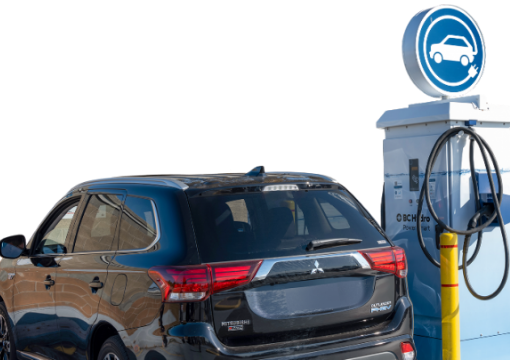The B.C. government’s zero emission vehicle mandate targets are unrealistic and should be reconsidered, says Barry Penner, chairman of the Energy Futures Institute (EFI).
A new report called A Road Too Far that was commissioned by the EFI suggests the targets are unrealistic in the first instance. But assuming they could be met, it would overwhelm B.C.’s power generation and charging infrastructure.
“The targets are overly ambitious, not adequately supported by infrastructure that we have at hand, so the targets either should be rescinded or adjusted,” said Penner, a former B.C. Liberal Environment minister.
The EFI commissioned Jerome Gessaroli, a senior fellow with the Macdonald Laurier Institute and instructor at the BC Institute of Technology (BCIT), to consider the implications of B.C.’s ZEV mandate, which sets targets that are more aggressive than other jurisdictions in North America.
B.C.’s ZEV mandates are aimed at phasing out passenger vehicles that run on gasoline or diesel, and replacing them with electric vehicles or hydrogen fuel cell vehicles.
Since the government can’t force people to buy EVs or hydrogen fuel cells, it proposes ZEV mandates to try to limit the availability of gas and diesel vehicles and increase the availability of EVs and hydrogen vehicles.
It sets sales targets for auto dealers, who would be penalized for exceeding their limits on gas or diesel powered vehicles sales.
The B.C. ZEV mandate would require 26 per cent of all vehicles sold in B.C. in 2026 to be ZEVs, 90 per cent by 2030 and 100 per cent by 2035. California’s targets, by contrast, is 68 per cent by 2030.
“High EV prices, even with purchase subsidies, an underdeveloped charging network, and range anxiety are all factors that have inhibited widespread adoption,” the report says. “A sales mandate does not negate the existence of these challenges.
“If EV sales in BC fall short of expectations, automakers may have to limit the sale of conventional combustion engine vehicles in order to comply with percentage targets and avoid significant financial penalties,” the report warns.
“However, doing so would likely drive-up prices of new and used conventionally powered vehicles, adversely affecting the finances of many British Columbians.”
To meet the ZEV sales targets, B.C. might have a hard time providing all the additional charging infrastructure and electrical generation that would be needed, the report warns.
When Site C dam is finished, it will add about 5,100 gigawatt hours (GWh) to B.C.’s grid, and a new power call by BC Hydro will add another 3,000 GWh.
The ZEV targets would require an additional 2,700 GWh by 2030, according to Gessaroli’s report. And by 2040, an additional 9,700 GWh would be needed – the equivalent of two Site C dams.
Gessaroli estimates that B.C. has about 5,000 public EV chargers, and notes the provincial government has set a target of 10,000 public chargers by 2030.
Gessaroli cites Natural Resources Canada, which estimates one public charger will be needed for every 43 EVs, if 90 percent of vehicles on the road are electric.
“Given the 43:1 EV to public charger ratio and assuming four million vehicles, the province will need a cumulative total of 93,000 public chargers by 2040,” Gessaroli concludes.
“While exact estimates vary, experts have indicated that B.C. could require upwards of 40,000 public chargers by 2030 and 90,000 by 2040. Installation costs would be in the billions.
“The total cost, excluding the already-installed public chargers, is estimated to be $1.8 billion.”



